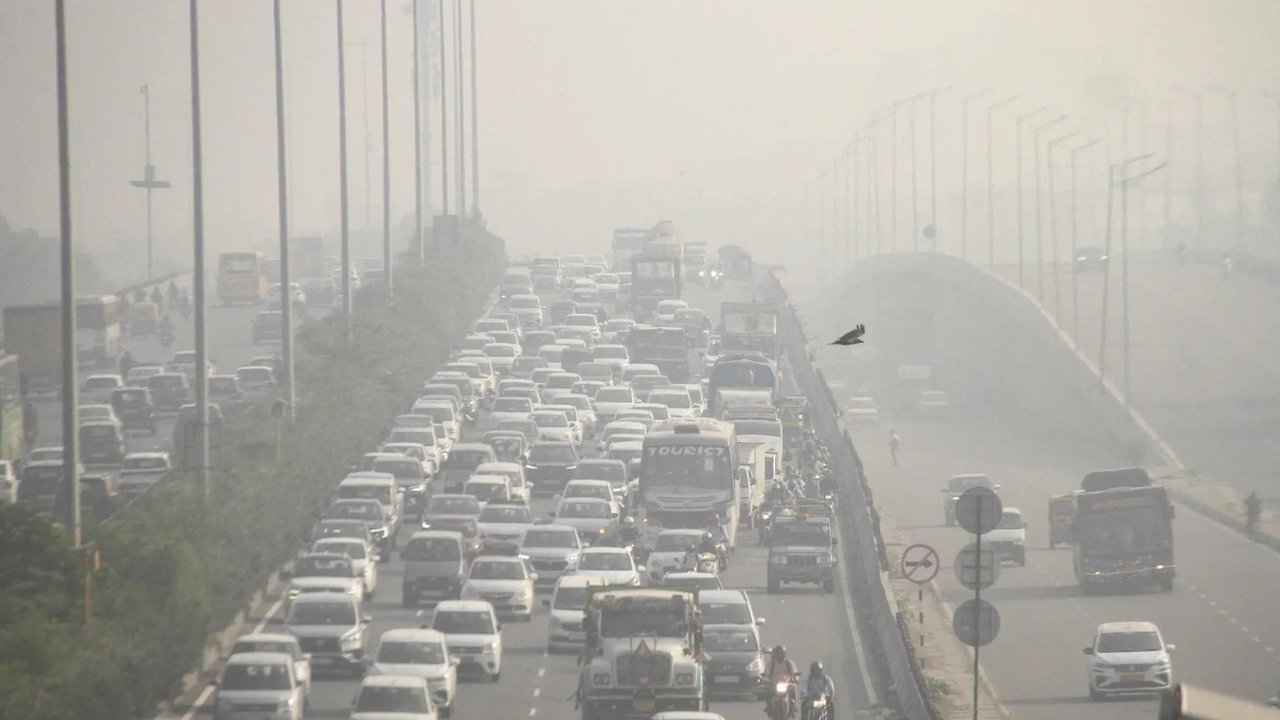
As residents across the national capital celebrated Diwali with fireworks on Monday night, Delhi’s air quality took a sharp hit, with the majority of monitoring stations entering the ‘red zone’.Although the Supreme Court had permitted the use of green firecrackers between 8 pm and 10 pm on the festival day, celebrations continued well beyond the allotted hours.
Data showed that 36 out of 38 monitoring stations recorded pollution levels in the ‘red zone’, indicating ‘very poor’ to ‘severe’ air quality across the city.
Morning visuals on Tuesday reveal Akshardham, partially obscured by haze. Stage II (GRAP-2) measures are in effect across Delhi-NCR.By 10 pm, Delhi’s overall air quality index (AQI) was classified as ‘very poor’ at 344, with four stations reporting ‘severe’ levels above 400. According to the SAMEER app developed by the Central Pollution Control Board (CPCB), the worst-hit areas were Dwarka (417), Ashok Vihar (404), Wazirpur (423), and Anand Vihar (404).
The city’s 24-hour average AQI, reported daily at 4 pm, also remained in the ‘very poor’ category at 345, higher than Sunday’s 326, according to official data. In the afternoon, 31 stations recorded ‘very poor’ air quality, while three fell under the ‘severe’ zone.
Authorities warned that air quality is likely to deteriorate further, slipping into the ‘severe’ category more broadly on Tuesday and Wednesday.
The CPCB categorises AQI between 0 and 50 as ‘good’, 51 and 100 as ‘satisfactory’, 101 to 200 as ‘moderate’, 201 to 300 as ‘poor’, 301 to 400 as ‘very poor’, and 401 to 500 as ‘severe.’
Transport emissions contributed 15.6 per cent to Delhi’s pollution on Monday, while other sources, including industries, accounted for 23.3 per cent, data from the Decision Support System (DSS) showed.
On Sunday, the Commission for Air Quality Management (CAQM) invoked Stage II of the Graded Response Action Plan (GRAP) across Delhi-NCR. The decision followed a review by the GRAP sub-committee on Saturday and forecasts from the India Meteorological Department (IMD) and the Indian Institute of Tropical Meteorology (IITM).Earlier, on October 15, the Supreme Court had allowed the sale and bursting of green firecrackers in Delhi-NCR between 6 am and 7 pm, and again from 8 pm to 10 pm on Diwali eve and the day of the festival.
Join the community of 2M+ industry professionals.
Subscribe to Newsletter to get latest insights & analysis in your inbox.
All about ETAuto industry right on your smartphone!
- Download the ETAuto App and get the Realtime updates and Save your favourite articles.





